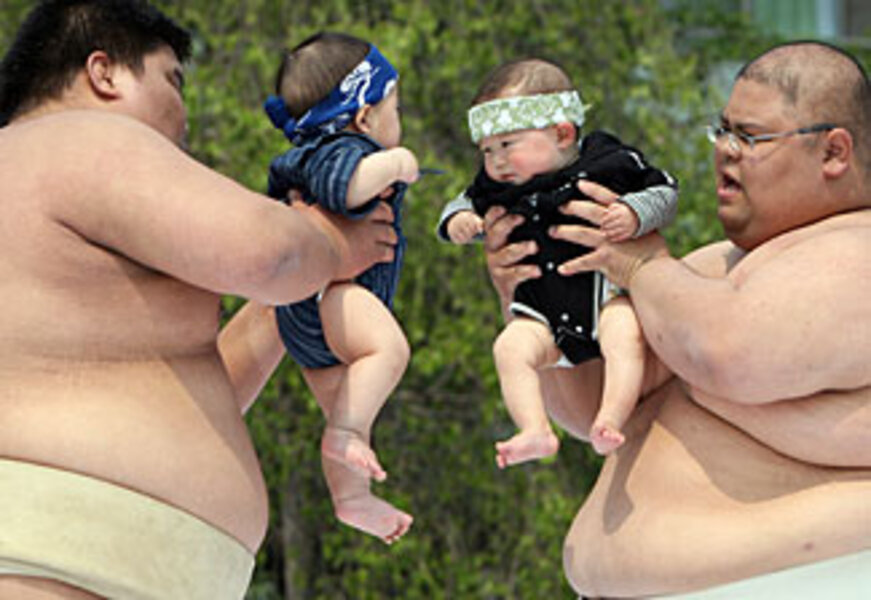How Japan plans to have more babies
Loading...
| Tokyo
After Japanese Prime Minister Yukio Hatoyama's debut on the international stage last week at the United Nations General Assembly in New York, the premier is back home to tackle daunting tasks. One of the most intractable problems his country is facing is its falling birthrate.
Japan's population could shrink by25 percent by 2050 if the birthrate does not increase, according to the National Institute of Population and Social Security Research.
Prime Minister Hatoyama's Democratic Party of Japan won an overwhelming election victory last month, breaking more than 50 years of almost uninterrupted rule by the Liberal Democratic Party. In an attempt to bring the birthrate back to a sustainable level, the new government has promised to ease the expense of raising children in this island nation.
According to government minister Mizuho Fukushima, previous administrations "have been weak on providing financial support even though they have taken steps to tackle the daycare shortage problems." Now, Japan "is going to provide childcare support as much as it can to create a society where Japanese people can have a dream of raising children," Bloomberg quoted him as saying.
Mr. Hatoyama has vowed to spend 16.8 trillion yen ($186 billion) to pull the country out of its economic slump in a package that includes provisions such as tuition aid and child support to make raising children easier.
Families would receive 13,000 yen ($144) a month per child under 15 in the year beginning April 2010 and 26,000 yen a month the following year if his plan is approved.
Ms. Fukushima, the leader of the Social Democratic Party (SDP), says monthly allowances are not enough on their own. She says that more than 30,000 children are on daycare center waiting lists so money is needed to provide more childcare. She says requiring health insurance to cover fertility treatments may also be a good idea.
Fertility rate dropped from 2.16 to 1.26
Japan is one of the world's most rapidly aging countries and has one of the lowest birthrates – a result, says the institute, of socioeconomic changes brought on by a rapid period of economic growth. Since 1970, the number of Japanese over 65 has tripled to 22.1 percent of the population in 2008. The percentage could increase to 31.8 percent by 2030. Projections for over-65 populations in India, China, and the US in 2030 are 8.4 percent, 15.9 percent, and 19.8 percent, respectively, of the total national population.
Meanwhile, the total fertility rate – the average number of children each woman has in her lifetime – steadily declined from 2.16 in 1971 to 1.26 in 2005. The figure has improved of late – up to 1.37 in 2008 – but it's still among the lowest in the world, after Germany (1.33) and Italy (1.35). The average number of children born by women in the US is 2.1.
Japan needs at least a 2.07 average to keep the population at the current level, says Fusami Mita, a senior researcher at the institute.
Why birthrates have fallen
Since the 1970s, socioeconomic changes encouraged Japanese to marry later, if they marry at all.
The following prolonged economic slump made more people struggle in an unstable job market. As a result, more men – considered to be breadwinners in Japan – cannot afford to have a family.
Long working hours, the rising cost of childrearing and mothers' large responsibility for raising a child have also cut the birth rate, says Yasuko Oshima, a senior economist at Mizuho Research Institute. "Parents are also having a hard time making work and childrearing compatible."
While Ms. Oshima welcomes the new government's child allowances plan, she says society needs to change from a traditional approach where mothers alone bear the burden of childrearing.
Japan, she says, "needs to promote the creation of an environment conducive to not only wives but husbands working while raising a child."





